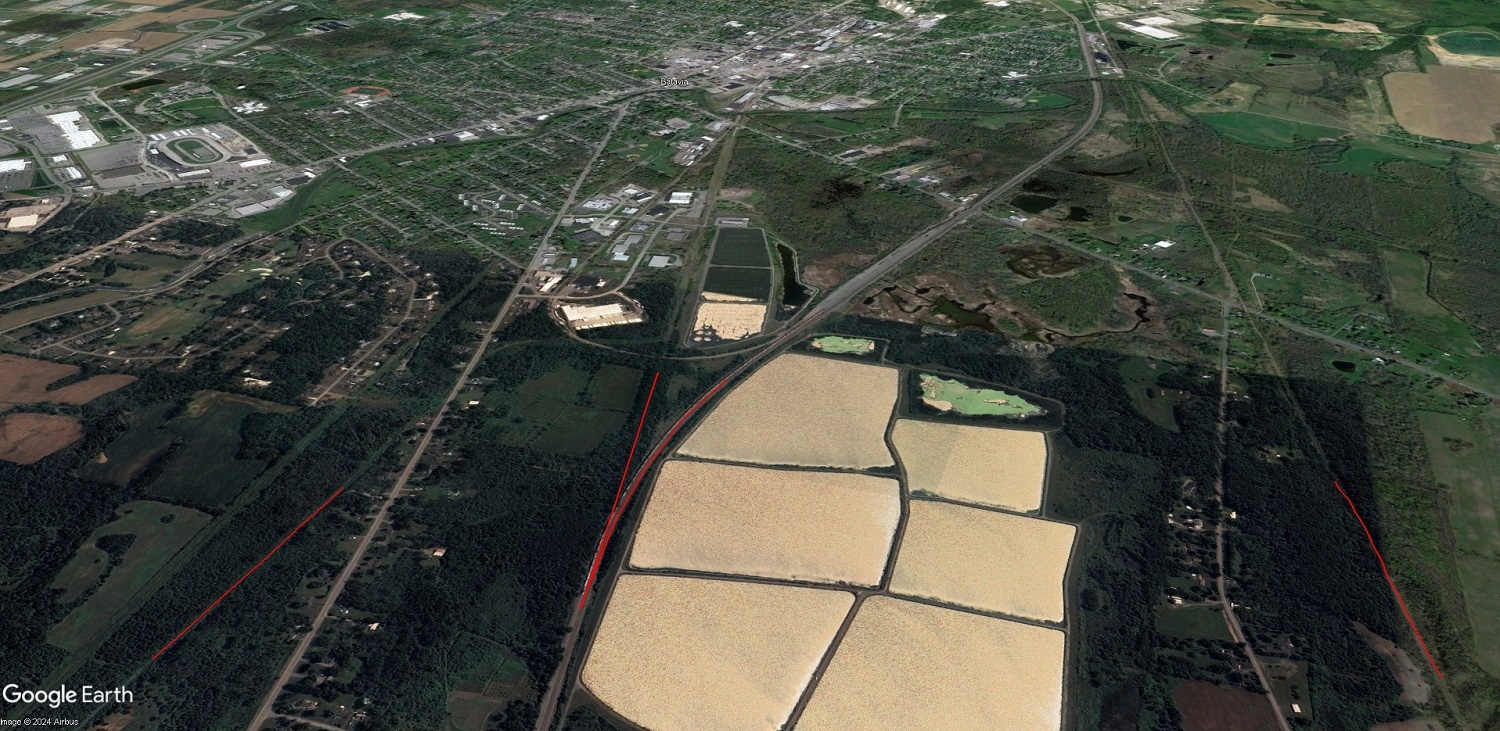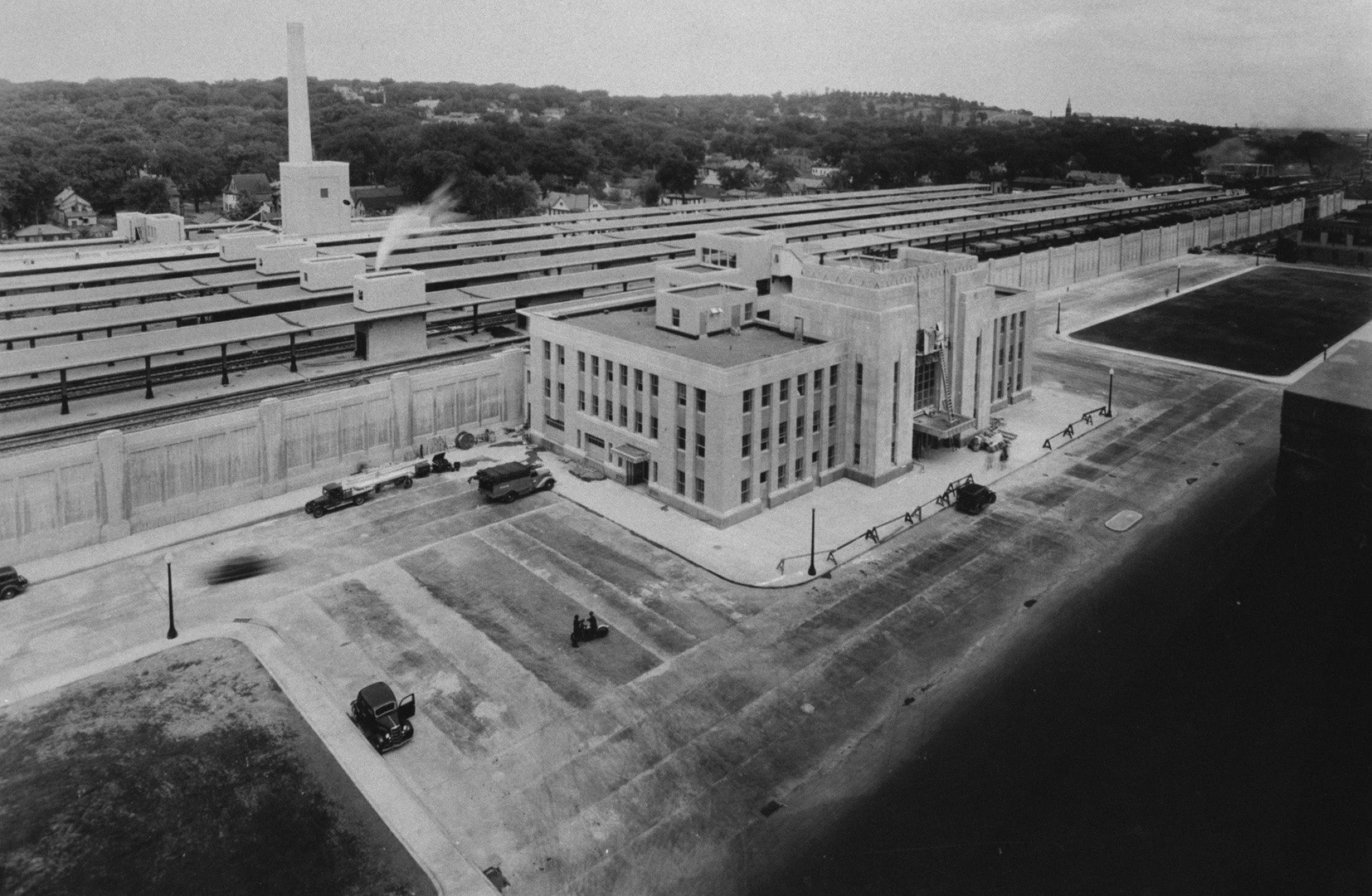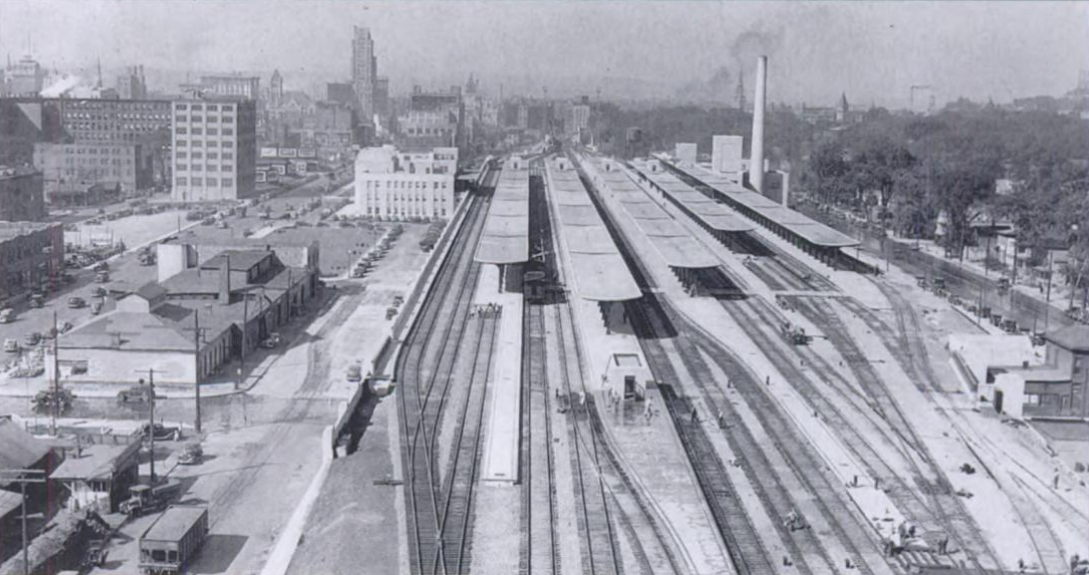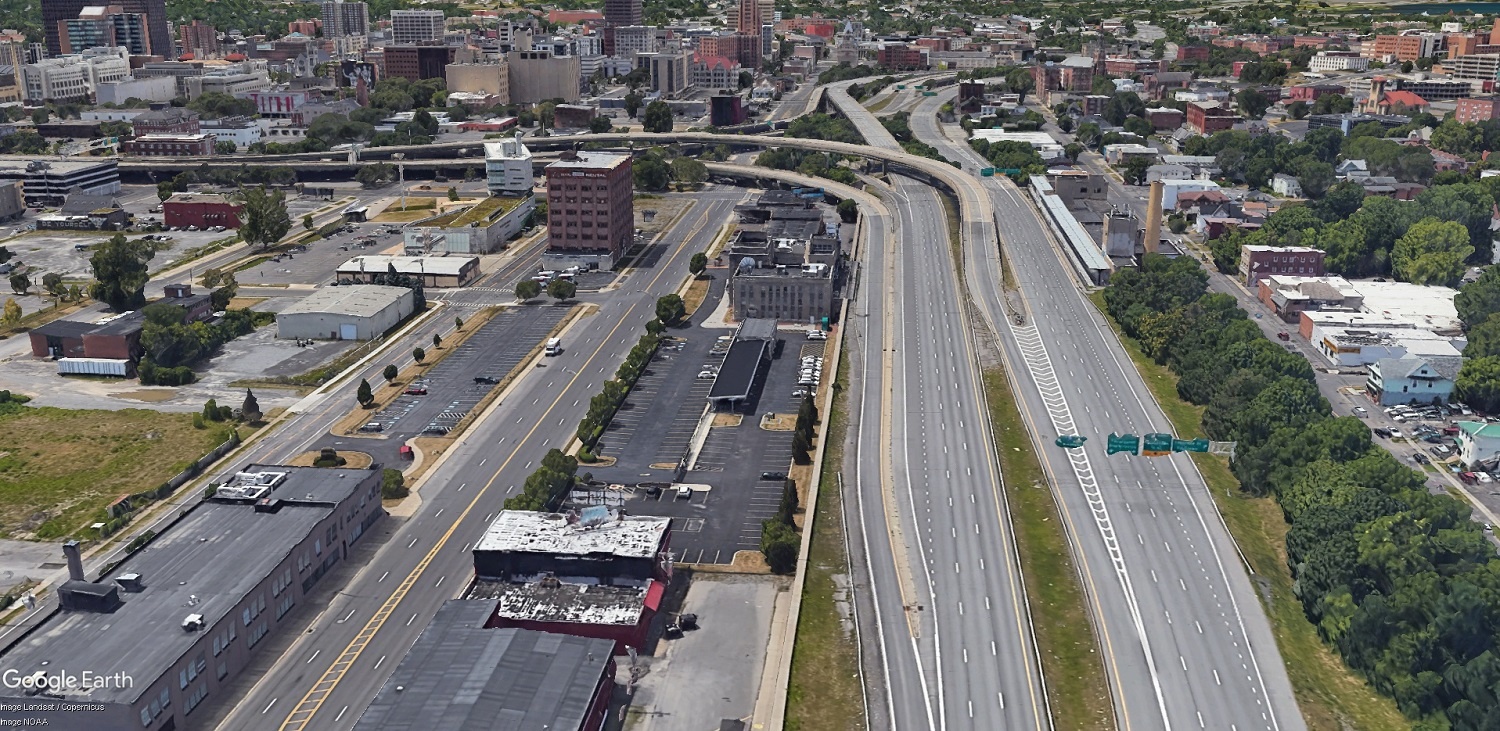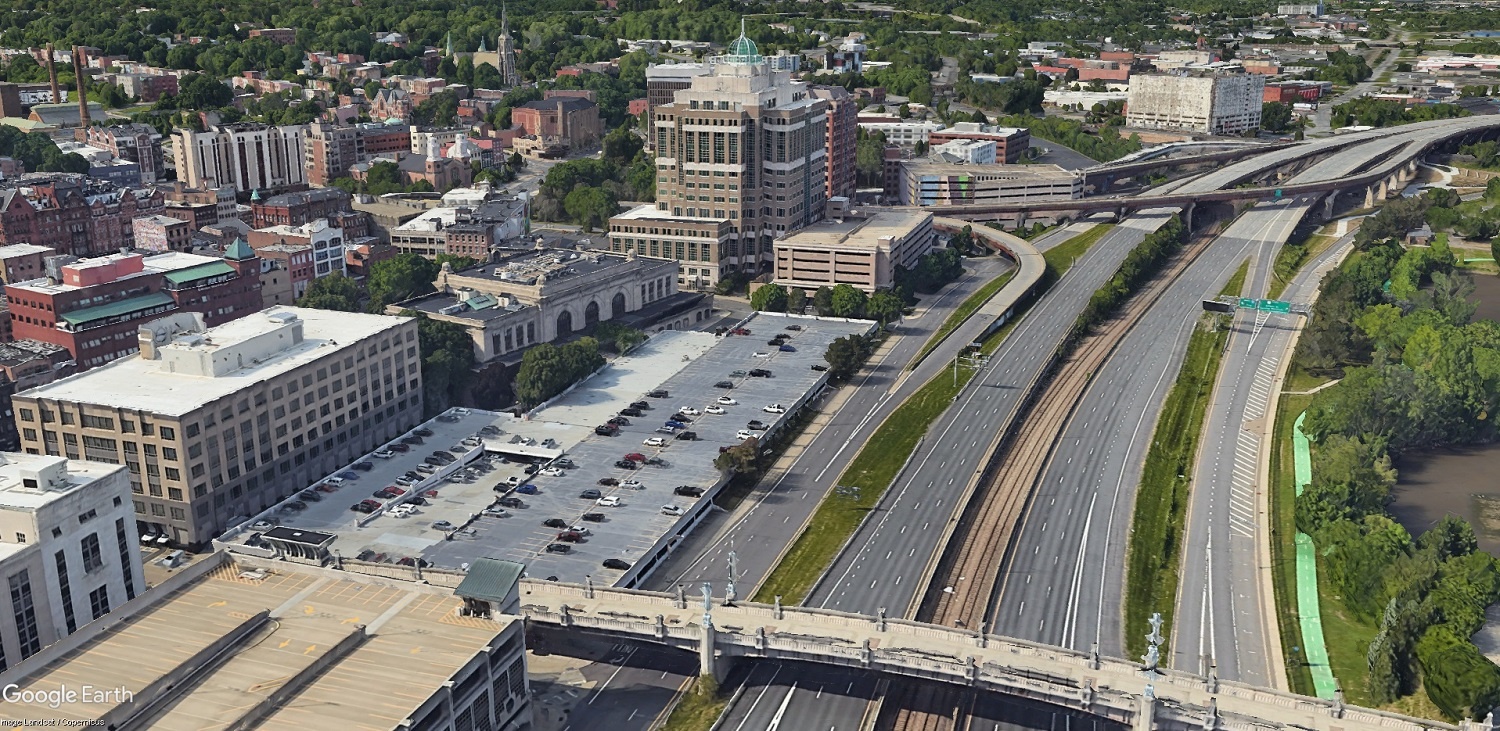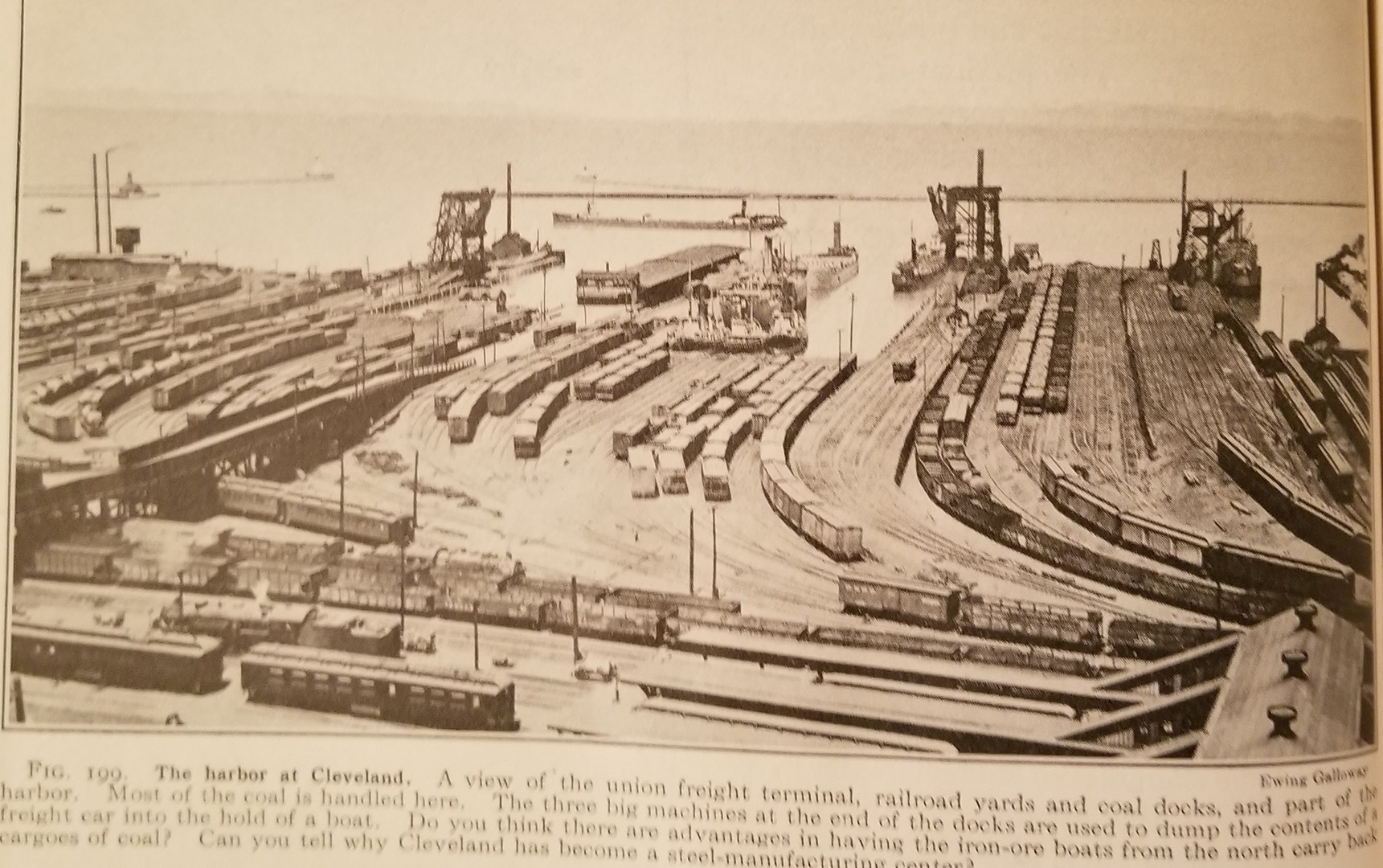
Everything posted by KJP
-
Cleveland: Brooklyn Centre / Old Brooklyn: Development and News
Seeds & Sprouts 34 – McKinsey moving atop Key, Dunham Tavern adding green infrastructure, Brooklyn Polish hall to host Encompass Health, Nia’s Cafe to open on Kinsman By Ken Prendergast / February 22, 2024 Brooklyn Polish hall to host Encompass Health A nationwide health-care provider is planning to establish its first Northern Ohio location at the former Brooklyn Polish American Home, 4737 Pearl Rd., in Cleveland’s Old Brooklyn neighborhood. Built in 1930, the old fraternal hall is also planned to have a space provided for a future coffee shop on the lower level while the second floor will continue to serve as an AmPol Club & Halls event center for the time being. MORE: https://neo-trans.blog/2024/02/22/seeds-sprouts-34-mckinsey-moving-atop-key-dunham-tavern-adding-green-infrastructure-brooklyn-polish-hall-to-host-encompass-health-nias-cafe-to-open-on-kinsman/
-
Cleveland: Midtown: Development and News
Seeds & Sprouts 34 – McKinsey moving atop Key, Dunham Tavern adding green infrastructure, Brooklyn Polish hall to host Encompass Health, Nia’s Cafe to open on Kinsman By Ken Prendergast / February 22, 2024 Dunham Tavern adding green infrastructure Thanks to a grant awarded just two months ago, the Dunham Tavern Museum and Gardens, 6709 Euclid Ave., is already moving ahead with plans to make a significant investment in green infrastructure and to help beautify its 200-year-old grounds and gardens in Cleveland’s MidTown neighborhood. MORE: https://neo-trans.blog/2024/02/22/seeds-sprouts-34-mckinsey-moving-atop-key-dunham-tavern-adding-green-infrastructure-brooklyn-polish-hall-to-host-encompass-health-nias-cafe-to-open-on-kinsman/
-
Cleveland: Downtown Office Buildings Updates
Seeds & Sprouts 34 – McKinsey moving atop Key, Dunham Tavern adding green infrastructure, Brooklyn Polish hall to host Encompass Health, Nia’s Cafe to open on Kinsman By Ken Prendergast / February 22, 2024 McKinsey moving to near top of Key Tower Business consulting firm McKinsey & Company’s Cleveland office is doing what many others in the nation’s office market are doing — shrinking their office footprint and making a flight to quality. While their current home is the trophy-class, 23-story, Oswald Tower at Flats East Bank, 950 Main Ave., their new home promises to be even more impressive. MORE: https://neo-trans.blog/2024/02/22/seeds-sprouts-34-mckinsey-moving-atop-key-dunham-tavern-adding-green-infrastructure-brooklyn-polish-hall-to-host-encompass-health-nias-cafe-to-open-on-kinsman/
-
Cleveland: Downtown: Huntington Bank Field
Depends on what replaces the stadium. If it's something with density or otherwise gets used 365 days a year, it could generate more foot traffic over a full year than a 67,431-seats football stadium which can generate at most 670,000 or so visits in a year. Pre-expansion, the Rock Hall attracts that many visitors. The science center adds another 300,000. If we build a multimodal transportation center, plus 1,000 apartments with a bunch of restaurants and shops where the stadium now stands, that right there could easily surpass the stadium's annual visitors.
-
Cleveland: Lakefront Development and News
I would discuss this in the Cleveland rail history/preservation thread in the transportation section.
-
Cleveland: Tremont: Development and News
Ironically, Google shows that Shelly has another asphalt plant just around the next bend in the river, located at 101 Mahoning Ave. But Google suggests it may be closed. They also seem to lease this site, too, as it is owned by Concrete Inc., an affiliate of Osborne Inc. of Mentor. Next to that is a vacant piece of riverside land and is also owned by an affiliate of Osborne. Together, they measure nearly 11 acres. Next to the Osborne land are two parcels totaling 7.4 acres and owned by Norfolk Southern Corp. There is an abandoned industry on that property. Combined, all of these parcels total about 18 acres. Their current site on the Tremont hillside is about 16 acres. The city would probably have better luck getting NS's attention to sell its property, especially if it started filing building code violations for the decaying buildings. So the city buys it, cleans it up, gets a NOFA from the EPA, and then sells it to Shelly or Holcim. Problem solved. Of course, this will probably take about 10 years to accomplish.
-
Cleveland: Tremont: Development and News
There isn't a lot of infrastructure involved with that asphalt plant. I suspect, however, they want to stay next to a navigable waterway so they can get cheaper shipments of aggregates. If they can find another dock location someplace in/near Cleveland, I'll bet this asphalt plant won't be here much longer.
-
Cleveland: Lakefront Development and News
Downtown docks handled outbound coal, inbound ore, so there's no empty backhauls. It's cool having a discussion with someone as informed about history as you @CleCaneFan. Thanks. As we redevelop our lakefront for a post-industrial Cleveland, it's important to know what came before not only for environmental cleanup reasons, but just to understand who and what Cleveland is/was.
-
Ohio Rail History & Preservation Thread
Looking east at Batavia, NY, just east of Buffalo, we have scars on the landscape and 2-3 tracks of a lone mainline railroad remaining. This is the approximate area where, in 1893, New York Central locomotive #999 hauled the Empire State Express at a then-world record speed of 112.5 mph. It held that record for a decade (beaten by a 127 mph Pennsylvania Railroad passenger train on its own Chicago-New York City mainline across western Ohio). America was leading the world in high-speed rail. New York Central was still feeling frisky enough in the 1950s that it built a four-track, grade-separated bypass around the south side of Batavia with a two-platform, grade-separated passenger station on it. That mainline was built in addition to the New York Central's parallel, two-track, West Shore Line at left and the two-track Lackawanna RR mainline at far right. Why mention the Lackawanna too? Because it ran to New York City via Scranton and was part of another parallel Chicago-New York City operation offered in partnership with the Nickel Plate RR at Buffalo (west to Cleveland, Bellevue, Fort Wayne and Chicago). Both the Lackawanna and the Nickel Plate were well-designed fast railroads in their own right, with the Lackawanna building in the 1910s faster, all-new rights of way through the rugged terrain of Northeast Pennsylvania and Northwest New Jersey to offer fast passenger and freight trains. It featured massive viaducts, tunnels, long straightaways and gentle curves. That 100-plus-year-old right of way could easily accommodate 100 mph trains today. But, as you can see, the Lackawanna is gone here, as it is substantially downgraded or abandoned in Pennsylvania and New Jersey.
-
Amtrak & Federal: Passenger Rail News
To keep this thread on topic, I've posted some then-and-now views of major changes to New York Central Railroad's Chicago-New York City "Water Level Route" that hosted the Great Steel Fleet with 15 -20 passenger trains in each direction at up to 100 mph....
-
Ohio Rail History & Preservation Thread
Syracuse NY New York Central station built and financed by the stockholder-owned railroad company (no government money) on a new passenger-only right of way through the city in 1936. The two historic photos show it nearly completed. The government was responsible for what replaced it (shown in March 2020 view) although the station building and one platform remains. Can you spot the lone platform?
-
Ohio Rail History & Preservation Thread
Redirecting the discussion from the Amtrak thread to here. Let's look at the New York Central's Chicago-New York City mainline, especially the passenger infrastructure and what happened to it.... Albany NY 1960 Same spot in October 2022 -- now the trains stop at a station across the Hudson River in Rensselaer, forcing riders heading to state capital offices to get a taxi/uber/lyft rather than walk. But the old New York Central station in downtown Albany still stands...
-
Cleveland: Lakefront Development and News
Except that it was inseparable. Everything from Edgewater Park east to near Gordon Park -- basically the entire pre-1900 city of Cleveland lakefront -- was industrialized and heavily devoted to the steel industry. Maybe not in the direct manufacture but certainly in the supply of it among the Midwest and Northeast. And the part nearest to downtown on both sides of the Cuyahoga River was devoted to the iron and steel industry. People forget that the downtown lakefront looked like this from the 1850s until the 1950s. This is 1935. The roadway bridge at left was West 9th Street and the Warehouse District was Cleveland's central business district from the 1860s to the 1910s...
-
Cleveland: Lakefront Development and News
Not true. Not only were the ore docks established along the lakefront to feed steel mills from Cleveland to as far away as Johnstown, PA, one of Cleveland’s oldest iron and steel works was built on the lake. Otis Steel Co.'s Lakeside Plant, later acquired by Jones & Laughlin (LTV), operated between East 26th Street and East 33rd Street north of the New York Central Railroad tracks along with several related companies. The plant closed in the early 1950s as J&L expanded its operations in the Flats. The lakeside plant was demolished for the Inner Belt's interchange with the Shoreway.
-
Amtrak & Federal: Passenger Rail News
Exactly. Consider the 3C Corridor. It was mostly double-track until the passenger trains came off in the 1960s. Then the railroads single-tracked most of it, didn't maintain the curve elevations (banking) which reduced the speeds, and the stations faded away. In Cleveland, we lost the dedicated passenger right of way into Cleveland Union Terminal, as well as the station infrastructure itself. In Cincinnati, three railroad corridors (B&O, NYC and PRR) into the city were consolidated into one (NYC). While it's fortunate that this preserved access to Cincinnati Union Terminal, the remaining railroad right of way was heavily congested with freight traffic, leaving no speedy route for passenger trains. But perhaps the biggest killer was what was done to east-west train service. We had the New York Central's 100 mph Water Level Route (maintained at 85 mph with ATS after the BS 79 mph limit came into effect in 1949) between Chicago, Elkhart, Toledo, Cleveland, Buffalo, Albany and New York City. And we also had the parallel, double-tracked Michigan Central between Chicago and Porter, IN, some Chicago-NYC trains going through Michigan and Canada (now abandoned Detroit-Buffalo), the Old Road Lake Shore & Michigan Southern from Elkhart to Toledo, and from Toledo to Elyria. East of Elyria all way through New York state, the Water Level Route was four tracks. And east of Buffalo, you had the parallel, double-track West Shore Line with lots of grade-separated flying junctions with the Water Level Route. It was basically a six-track mainline from Buffalo to NYC. Now it's just two tracks with some passing sidings with just as much freight traffic. No way you could restore the New York Central's pre-1955 30-40 passenger trains a day at 85 mph here. To restore this would cost billions.
-
Cleveland: Downtown: Sherwin-Williams Headquarters
Two spires playing peek-a-boo!
-
Cleveland: University Circle: Cleveland Clinic Developments
CCF hasn't even acknowledged where it's going to go yet. CCF can be a very slow, bureaucratic organization -- especially when it comes to real estate. If they have a bad quarter financially, they act on that rather than their needs over the next decade or two.
-
Cleveland: Shaker Square: Development and News
Agreed. And I would emphasize CC in the CC thread.
-
Cleveland: Midtown: Development and News
CLE Consulting Firm leaving Downtown for MidTown By Ken Prendergast / February 21, 2024 CLE Consulting Firm, a growing provider of business accounting and tax services, has reached a purchase agreement to acquire the Euclid Gallery Building, 7029 Euclid Ave. in Cleveland’s MidTown neighborhood, public records show. The faded masonry building will reportedly be renovated as the new headquarters for the company which also has offices in Akron, Cincinnati, Columbus, Toledo and Atlanta. MORE: https://neo-trans.blog/2024/02/21/cle-consulting-firm-leaving-downtown-for-midtown/
-
Cleveland: Random Development and News
It's nothing new. If anything there is a light at the end of the tunnel now. This article should have been written 6-12 months ago. I've been referring to this situation in articles since last September, starting with this: https://neo-trans.blog/2023/09/22/downtown-lakewood-project-going-through-phases/
-
Amtrak & Federal: Passenger Rail News
@westerninterloper You're right. Not that many people will ride from Detroit to New Orleans. But a train isn't an airplane that keeps its doors sealed from origin to terminal. A train makes multiple stops along the way in cities big and small. So even on a route like the Lake Shore Limited that links two very large, globally prominent cities like New York and Chicago, only 10 percent of the route's 1,000 daily riders travel between those endpoint cities. A Detroit-New Orleans train will carry people from Detroit-Cincinnati, Toledo-Dayton, Columbus-Louisville, Cincinnati-Nashville, Louisville-Montgomery, Decatur-Mobile, Montgomery-New Orleans, and of course, Bowling Green, OH to Bowling Green, KY. A seat may never cool.
-
Cleveland: Shaker Square: Development and News
He's referring to Shaker Square's direct transit linkage with the fourth-largest job center in the state and potentially the fastest growing. The fact that UC has only one rail line, and it merely skirts the edges of UC, is a problem that a responsible region would address forthwith. While it's difficult to offer a guarantee about the future, I'm pretty certain that Shaker Square would see a boost if it were directly linked to UC by rail.
-
Cleveland: Tremont: Development and News
Tremont hillside development plan regains life By Ken Prendergast / February 20, 2024 A large, proposed redevelopment of former industrial and railroad lands on a hillside in Cleveland’s Tremont neighborhood is showing renewed signs of life after a court battle was settled in December. That settlement involved land being divvied up so a rezoning can move forward and an asphalt plant can continue to operate. If the land is rezoned by City Council, a mostly residential development can proceed — next to the asphalt plant. MORE: https://neo-trans.blog/2024/02/20/tremont-hillside-development-plan-regains-life/
-
Cleveland: Buckeye-Shaker: Development and News
Cleveland’s Select Medical Fairhill Hospital to see major rehab By Ken Prendergast / February 20, 2024 Just uphill from the Cleveland Clinic’s main campus, Select Medical Fairhill Hospital is seeking a significant renovation and partial conversion of its recovery-care hospital to provide rehabilitation services. The fate of this facility was unknown after Select Medical recently closed another facility near Downtown Cleveland. MORE: https://neo-trans.blog/2024/02/20/clevelands-select-medical-fairhill-hospital-to-see-major-rehab/
-
Cleveland Heights: Development and News
Not that I'm aware of






